Can Dogs Eat Gingerbread? Vet Explains the Holiday Hazard (Nutmeg Alert!)
- 15 Apr 2025 10:47
The festive season often brings with it the warm, spicy aroma of gingerbread baking in the oven. Whether it's gingerbread cookies, houses, or loaves, these treats are a holiday staple for many humans. As you enjoy the comforting flavor, your canine companion might be nearby, gazing hopefully, perhaps catching a whiff of the ginger and molasses. It's a natural impulse to want to share, leading to the question: can dogs eat gingerbread? While a tiny crumb might seem harmless, the answer from veterinarians and pet nutrition experts is a firm and resounding **NO**. Gingerbread is loaded with ingredients that are unhealthy for dogs, and critically, it often contains spices like nutmeg which are toxic to them.
This comprehensive guide will delve into the specific reasons why gingerbread, in all its forms, is unsuitable and dangerous for dogs. We will explore the problematic ingredients, focus on the toxicity of key spices, discuss the risks of sugar and fat, and recommend safe, festive alternatives for your furry friend. Adhering to E-E-A-T (Expertise, Authoritativeness, Trustworthiness) principles and grounded in veterinary knowledge, our aim is to keep your pet safe during the holidays and beyond.
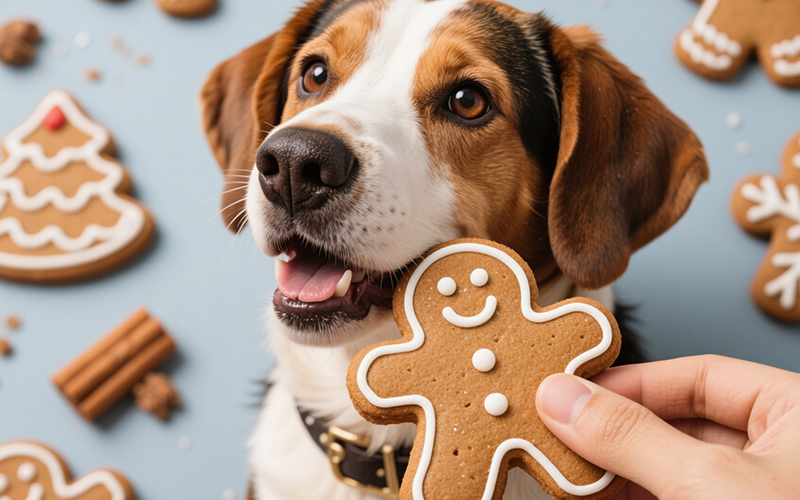
Deconstructing Gingerbread: A Recipe for Trouble for Dogs
To understand the risks, let's look at the typical ingredients found in most gingerbread recipes:
Flour: Usually refined white flour, offering little nutritional value (low fiber, vitamins) and potentially problematic for dogs with wheat sensitivities.
Sweeteners: A major component, often including molasses, brown sugar, white sugar, honey, or corn syrup. Sometimes multiple sweeteners are used.
Fat: Butter, shortening, or oil are necessary for texture and richness.
Eggs: Generally safe for dogs when cooked.
Spices: This is a critical area of concern. Common gingerbread spices include:
Ginger: Plain ginger root, in very small amounts, *can* be safe and potentially beneficial for dogs (e.g., for nausea). However, the amount and form in gingerbread are less controlled.
Cinnamon: Generally considered non-toxic to dogs in small amounts, but large quantities can cause irritation. Ceylon cinnamon is preferred over Cassia cinnamon.
Cloves: Contain eugenol, which can be problematic in concentration, though the amount in gingerbread is usually low. Still best avoided.
NUTMEG: This is the most dangerous spice commonly found in gingerbread. Nutmeg contains a toxin called **myristicin**, which can cause serious problems for dogs.
Leavening Agents: Baking soda and/or baking powder.
Optional Add-ins/Decorations:
Icing/Frosting: Adds even more sugar and fat. Sugar-free versions may contain lethal **XYLITOL**.
Candies/Sprinkles: More sugar, artificial colors/flavors.
Chocolate Decorations: **TOXIC** to dogs.
Raisins: Sometimes used in gingerbread loaves – **TOXIC** to dogs.
This breakdown clearly shows that gingerbread is a complex mixture of sugar, fat, refined carbs, and potentially toxic spices and decorations, making it fundamentally unsuitable for canine consumption.
The Most Serious Risk: Nutmeg Toxicity
While other ingredients are unhealthy, the presence of nutmeg makes gingerbread actively dangerous. Nutmeg contains a psychoactive and toxic compound called **myristicin**.
While a tiny sprinkle might not cause severe issues in a large dog (though individual sensitivity varies), the amount in gingerbread can be significant, especially if a dog eats more than a very small piece.
Symptoms of Nutmeg Toxicity in Dogs:
Ingestion of toxic levels of myristicin can cause a range of alarming symptoms, typically appearing within a few hours:
Disorientation, confusion, hallucinations
Increased heart rate (tachycardia)
High blood pressure (hypertension)
Dry mouth
Abdominal pain, vomiting
Agitation or sedation (can vary)
Muscle tremors
Seizures (in severe cases)
Symptoms can last for 24-48 hours or even longer. While fatalities are rare, nutmeg poisoning can be serious and requires immediate veterinary attention. The risk of nutmeg in gingerbread is the primary reason vets warn against it.
Other Significant Health Risks of Gingerbread for Dogs
Beyond nutmeg toxicity, other ingredients contribute to why gingerbread is a bad choice:
1. Excessive Sugar Content
Gingerbread is loaded with sugar from molasses, brown sugar, white sugar, and often icing.
Weight Gain & Obesity: Contributes significant empty calories, leading to weight gain and increasing the risk of arthritis, diabetes, heart problems, etc.
Diabetes Risk:** Unsuitable for diabetic dogs and can disrupt blood sugar regulation in healthy dogs.
Dental Disease: Sugar promotes plaque, tartar, cavities, and painful gum disease.
Digestive Upset:** Can cause vomiting, diarrhea, and stomach discomfort due to the sugar overload disrupting the gut.
2. High Fat Content
Butter, shortening, or oil add considerable fat.
Pancreatitis Risk: High-fat foods are a major trigger for pancreatitis, a painful and potentially deadly inflammation of the pancreas requiring emergency veterinary care. Even a small amount of fatty gingerbread could precipitate an attack in susceptible dogs.
Gastrointestinal Distress:** High fat commonly causes vomiting and diarrhea.
3. Potentially Toxic Decorations or Add-Ins
As mentioned earlier, beware of common additions:
Chocolate:** Contains theobromine, toxic to dogs.
Xylitol:** Extremely toxic artificial sweetener potentially found in sugar-free icing or candies. **Always assume unknown sweets might contain xylitol unless proven otherwise.**
Raisins:** Toxic to kidneys.
4. Refined Flour
Provides minimal nutrition (low fiber, vitamins) and can be problematic for dogs with wheat allergies or sensitivities.
5. Other Spices
While less toxic than nutmeg, large amounts of cloves or even cinnamon could potentially cause irritation or stomach upset.
Given this combination of factors, it's clear that the risks associated with answering "can dogs eat gingerbread?" far outweigh any fleeting moment of perceived enjoyment for the dog.
Gingerbread Cookies vs. Houses vs. Loaves: Are Any Safer?
No, the form generally doesn't make it safe:
Gingerbread Cookies:** Contain all the core problematic ingredients (sugar, fat, flour, spices including nutmeg). Decorations add further risk.
Gingerbread Houses:** Often made with harder gingerbread (still contains risky ingredients) and held together/decorated with large amounts of sugary icing and potentially toxic candies. Also poses risks if dogs ingest non-edible decorative parts.
Gingerbread Loaves/Cakes:** Still contain sugar, fat, flour, and spices (nutmeg!). May also contain raisins, increasing the danger.
All variations of traditional gingerbread are unsuitable for dogs.
"What If It's Just a Tiny Taste?" The Argument Against Small Bites
Even a very small piece of gingerbread is not recommended:
Nutmeg Risk:** It's impossible to know the exact concentration of nutmeg, and even a small amount could affect a sensitive or small dog.
High Fat/Sugar Concentration:** Delivers unhealthy ingredients disproportionately.
Sets a Bad Precedent:** Encourages begging and the idea that human sweets are acceptable.
No Nutritional Benefit:** Offers nothing your dog needs.
There is no justification for intentionally feeding even tiny amounts of gingerbread.
Emergency Action: What To Do If Your Dog Eats Gingerbread
If your dog accidentally consumes gingerbread:
Identify Ingredients & Quantity:** Determine how much was eaten. Critically, try to ascertain if it contained known toxins like **nutmeg, chocolate, xylitol, or raisins.** Check packaging if possible.
Remove Access:** Prevent further ingestion.
**Contact Your Veterinarian or Pet Poison Helpline IMMEDIATELY IF:**
You suspect **nutmeg, chocolate, xylitol, or raisins** were ingested (These are emergencies!).
A large quantity of gingerbread was consumed.
Your dog is small or has pre-existing conditions (diabetes, pancreatitis history).
Your dog shows *any* signs of distress: vomiting, diarrhea, agitation, lethargy, tremors, seizures, disorientation, rapid heart rate, abdominal pain.
Provide Detailed Information:** Tell the vet/helpline the suspected ingredients, quantity, time eaten, and your dog's details.
Follow Veterinary Advice:** They may recommend monitoring, inducing vomiting (only if safe and instructed), supportive care (fluids), treatment for specific toxins (like nutmeg or xylitol), or hospitalization.
Prompt action is vital, especially if toxic ingredients are involved. Knowing what to do if dog eats gingerbread involves immediate professional consultation if there's any doubt or risk.
Safe and Festive Treat Alternatives for Your Dog
Instead of risky gingerbread, let your dog join the festivities with safe treats:
| Treat Option | Why It's a Safe Alternative |
| Gingerbread | UNSAFE/TOXIC: Nutmeg, high sugar/fat, potential chocolate/xylitol/raisins. Avoid completely. |
| Plain Cooked Sweet Potato (Mashed or Cubed) | Naturally sweet, high in fiber and vitamins (A, B6). Serve plain, cooked, cooled, peeled. A great safe holiday treat for dogs. |
| Plain Cooked Pumpkin Puree | Excellent for digestion, low calorie, high fiber/Vit A. Use 100% pumpkin, NOT pie filling. |
| Small Amounts of Dog-Safe Fruits (e.g., Blueberries, Apple Slices w/o core/seeds) | Offer vitamins, antioxidants, fiber. Natural sugars, so feed moderately. |
| Plain Cooked Lean Turkey or Chicken (Boneless, Skinless) | High-quality protein, highly motivating. Ensure no seasonings, bones, or skin. |
| Homemade Dog Biscuits (Using Dog-Safe Recipes) | Control ingredients completely. Can use whole wheat/oat flour, pumpkin, peanut butter (xylitol-free!), maybe a tiny pinch of *plain ginger* or cinnamon (no nutmeg!). |
| Commercial Dog Treats (Festive Flavors - High Quality) | Formulated for dogs. Check ingredients, choose reputable brands, monitor calories. |
Always limit treats to about 10% of your dog's daily caloric intake.
Need Fast Pet Safety Information? PettureX Can Help!
During busy times like holidays, accidents can happen, or questions about food safety might arise quickly. The PettureX App offers innovative AI-powered tools for immediate support:
Food & Object Identification: Use your phone camera to identify foods like gingerbread and get general pet safety warnings.
AI Symptom Analysis: If your pet ingests something harmful, input observed symptoms for preliminary AI insights to share with your vet.
24/7 AI Vet Consultation: Get instant answers to critical questions like, "What are the symptoms of nutmeg poisoning in dogs?" or seek guidance on managing potential toxicity situations anytime.
PettureX provides valuable, convenient access to information. However, it is crucial to remember it offers supplementary guidance and **cannot replace professional veterinary diagnosis, treatment, or emergency care.** Always contact your local veterinarian or a pet poison helpline immediately for definitive medical advice in emergencies.
Conclusion: Gingerbread is a Holiday Hazard for Dogs
In conclusion, the answer to "can dogs eat gingerbread?" is a definitive **NO**. This festive human treat is fraught with dangers for dogs.
Key Reasons to Avoid Gingerbread:
Nutmeg Toxicity: Contains myristicin, which can cause serious neurological and gastrointestinal symptoms.
High Sugar Content: Risks obesity, diabetes, dental disease, and digestive upset.
High Fat Content: Major risk factor for pancreatitis and contributes to obesity.
Potentially Toxic Add-ins: Risk of chocolate, xylitol, or raisins in decorated cookies, houses, or loaves.
Low Nutritional Value: Offers empty calories from refined flour and sugar.
Protect your dog during the holidays and all year round by keeping gingerbread strictly out of reach. Instead, involve them safely with healthy, species-appropriate treats. A safe pet is a happy pet, and avoiding dangerous human foods is a key part of responsible dog ownership.
Related
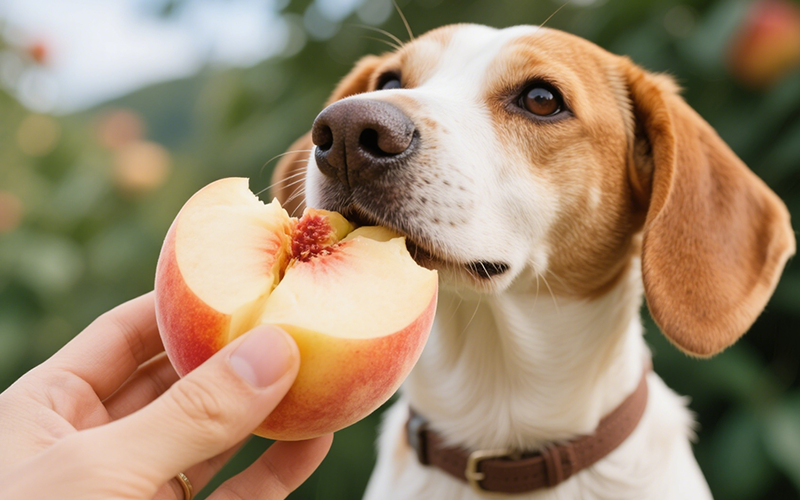
Can Dogs Eat Peaches? Vet Explains Benefits, Cyanide Risks & Safe Serving
- 16 Apr 2025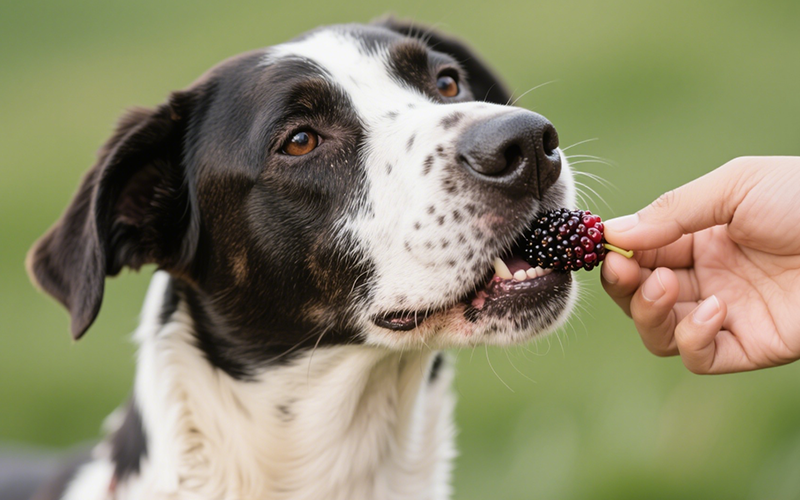
Can Dogs Eat Mulberries? Vet Explains Safety, Benefits & Potential Risks
- 16 Apr 2025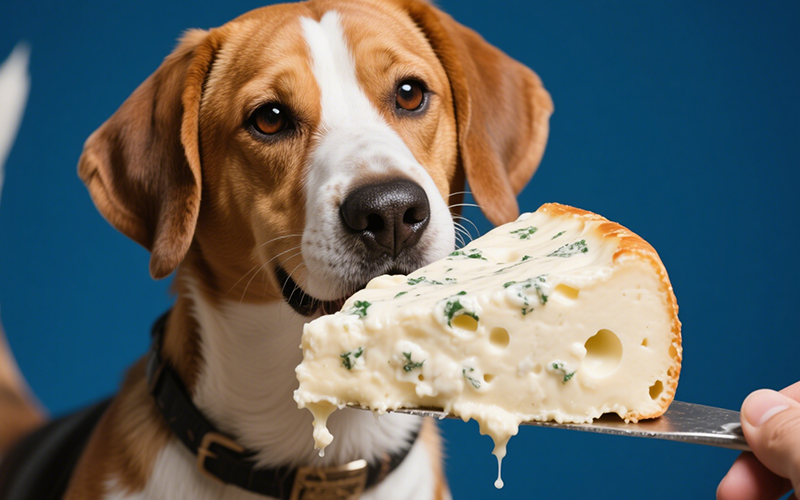
Can Dogs Eat Mozzarella? Vet Explains the Cheesy Truth (Risks & Benefits)
- 16 Apr 2025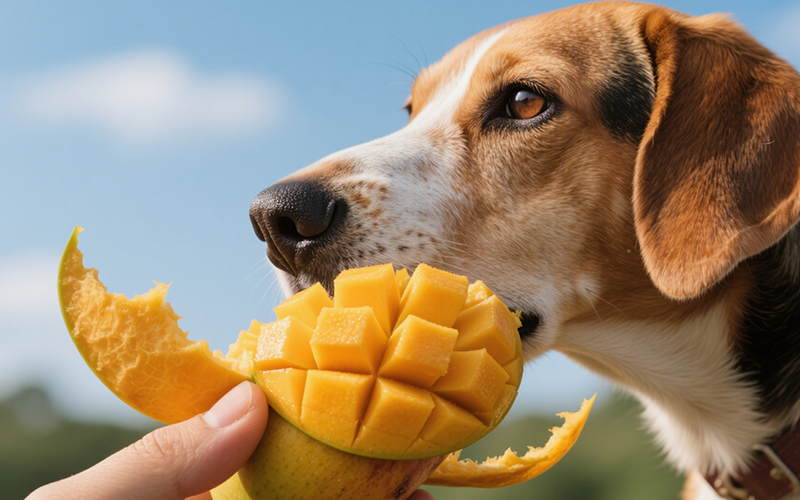
Can Dogs Eat Mango Skin? Vet Explains Why It's a Risky Chew!
- 16 Apr 2025
Can Dogs Eat Maple Syrup? The Sugary Truth & Why Vets Advise Against It
- 16 Apr 2025
Can Dogs Eat Mac n Cheese? Vet Explains Why This Comfort Food Is Unsafe!
- 16 Apr 2025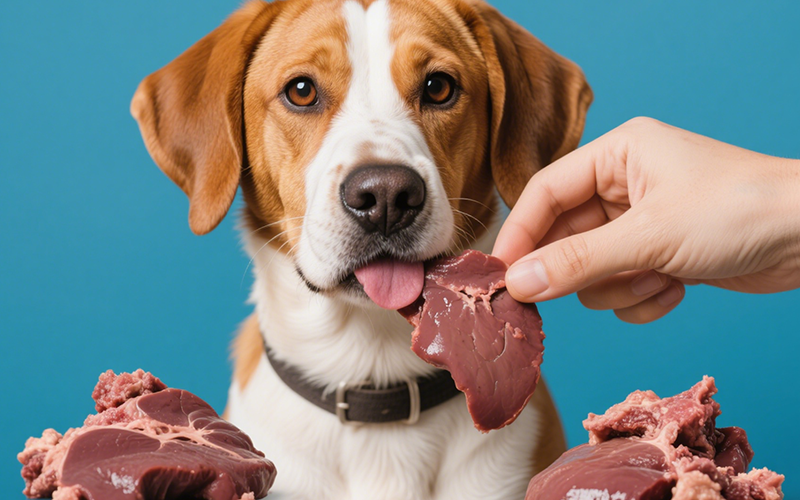
Can Dogs Eat Liver? Vet Guide to This Nutrient-Dense Organ Meat (Benefits & Risks!)
- 16 Apr 2025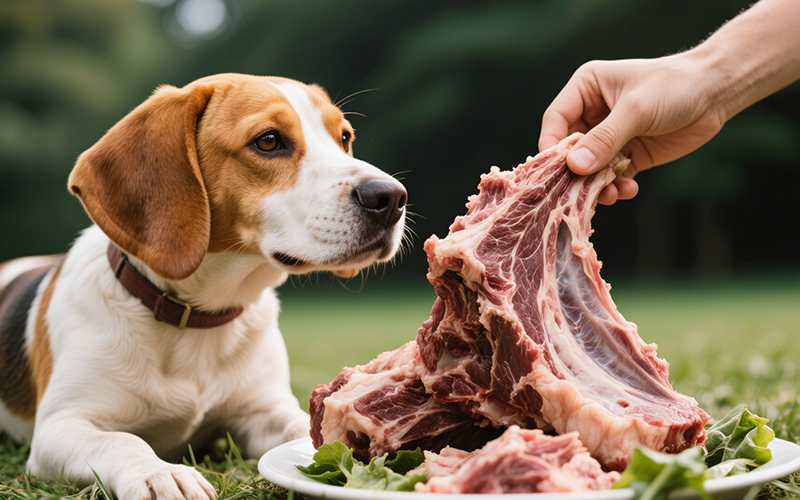
Can Dogs Eat Lamb? Vet Insights on This Nutritious Meat Option
- 16 Apr 2025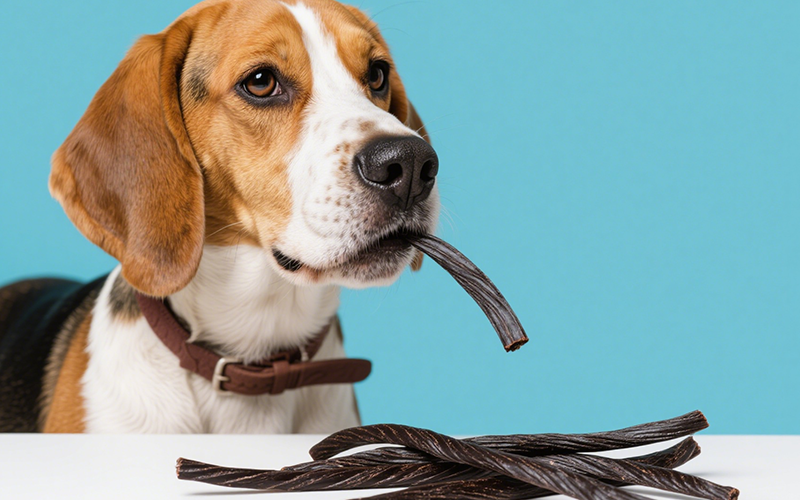
Can Dogs Eat Licorice? The Sweet Danger & Glycyrrhizin Risk Explained by Vets
- 16 Apr 2025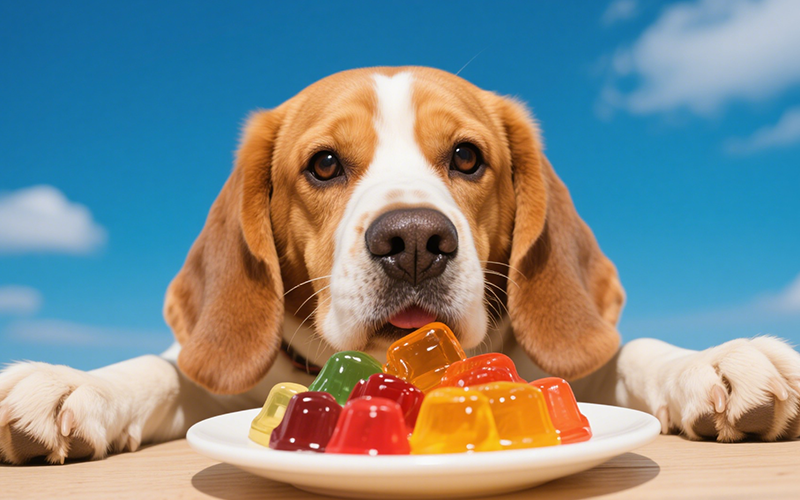
Can Dogs Eat Jelly? The Sweet Truth About Sugar, Xylitol & Why Vets Say No!
- 16 Apr 2025
